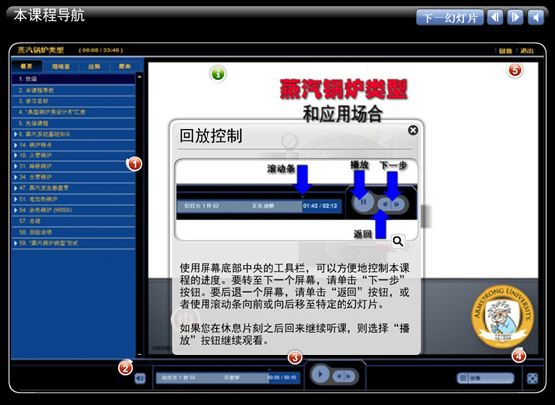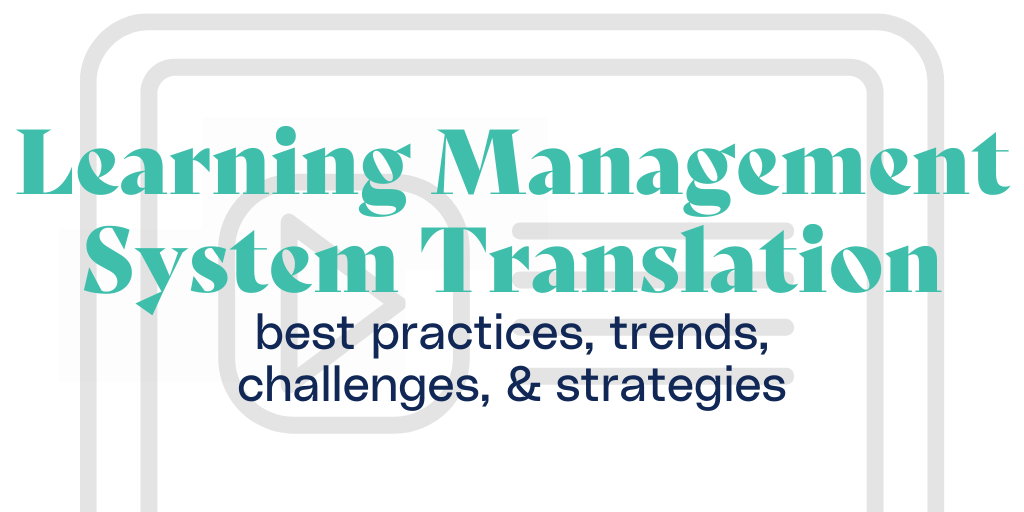From understanding the significance of Learning Management System translation for global inclusivity to exploring effective strategies and future trends, this guide offers valuable insights for educators and organizations. With a focus on promoting accessibility and engagement, it emphasizes the importance of embracing LMS translation to create a truly inclusive learning environment. Explore the article for actionable tips, case studies, and resources to enhance your educational initiatives in the digital age.
What is a Learning Management System?
In the digital age, Learning Management Systems (LMS) have emerged as powerful tools for education and training. These platforms provide a digital environment where organizations can create, deliver, and manage learning content. LMSs have transformed how we approach education, making it more flexible, accessible, and efficient.
The Importance of LMS Translation
LMS translation is pivotal for more effective and inclusive online learning. It involves converting the content of an LMS, including course materials, quizzes, discussions, and more, from one language into another to help bridge the language gap, making learning accessible to a wider audience.
Furthermore, it’s essential to recognize that it’s not just about translating the core eLearning course content, but also localizing course descriptions and titles. When a user switches the language of choice within the LMS user interface, they should see course descriptions and titles that are translated and culturally adapted, ensuring that learners can easily navigate and select courses in their preferred language. This approach further enhances language access and inclusivity, creating a more welcoming and accessible learning environment.
The Global Reach of eLearning with LMS Translation
The internet has made education and training accessible worldwide. eLearning has gone beyond traditional classrooms, reaching every corner of the globe. As a result, learners from diverse linguistic backgrounds can access courses from prestigious institutions and organizations irrespective of their geographical location. This transformation has revolutionized education, enabling lifelong learning and skill development. However, this global reach also introduces a challenge – the need for multilingual support.
Promoting Inclusivity and Accessibility
In a world with over 7,000 languages, not everyone speaks English or the primary language of a course. LMS translation promotes inclusivity and accessibility. It ensures that individuals who speak languages other than English can access and benefit from the online course(s). This is particularly crucial for non-native English speakers and individuals with varying levels of language proficiency.
Imagine a talented student or a skilled professional who is fluent in their native language but faces significant barriers when trying to learn a foreign language. When done professionally and accurately, LMS translation eliminates this barrier, providing equal learning opportunities for all.
Data and Statistics for Why Translate Your LMS
The importance of LMS translation is underscored by data from esteemed organizations. According to the UNESCO Institute for Statistics, the number of students enrolled in tertiary education abroad more than doubled from 2 million in 2000 to 6 million in 2019. This internationalization of education highlights the urgent need for multilingual educational resources.
Moreover, research conducted by the World Bank Education shows a strong correlation between language accessibility and learning outcomes. Students who learn in their native language perform significantly better in tests and assessments. This is a powerful indicator of LMS translation’s role in the educational success of a diverse global population.
Challenges in LMS Translation
Language Complexities and Nuances
Translating and localizing educational content is a complex process. Languages have nuances, cultural context, and idiomatic expressions that can be challenging to interpret accurately. For instance, translating a science lesson requires linguistic proficiency and an understanding of scientific terminology. It’s not just about finding equivalents for words; it’s about ensuring the translated content is as effective as the original.
Technical Challenges
Beyond linguistic complexities, there are technical challenges involved in LMS translation. LMSs often use various formats for course materials, including multimedia elements, interactive quizzes, and documents. Translating these materials while maintaining their original functionality can be technically demanding. Additionally, ensuring compatibility with different LMS platforms and devices is crucial for a seamless user experience.
Maintaining Consistency
Consistency is key when translating educational content. Inconsistencies in terminology, tone, or teaching methods can confuse learners. When a student switches between languages or accesses content in different languages, it’s essential that the material conveys the same meaning and context. Maintaining this consistency can be challenging when translating across multiple languages.
Addressing Cultural Differences
Language is not just a way to communicate; it’s deeply intertwined with culture. When translating educational content, it’s crucial to consider cultural differences. What works in one culture might not be suitable for another. A simple example is humor, which varies greatly between cultures. Failing to account for these cultural differences can lead to misunderstandings and reduced engagement.
Strategies for Effective LMS Translation: Selecting the Right Translation Approach
Choosing the right approach for LMS translation is a critical decision. There are three primary approaches: machine translation, human translation, and a hybrid approach. The choice depends on factors such as budget, time constraints, and the nature of the content.
Machine Translation: This uses automated software to translate content. While it’s fast and cost-effective, it may not provide the nuanced and culturally sensitive translations required for educational material.
Human Translation: This involves professional translators with a deep understanding of the subject matter. Human translation ensures accuracy, cultural relevance, and a deep understanding of the content. However, this approach can be more time-consuming and costly.
Hybrid Approach: This combines machine translation with human oversight. It balances speed and quality, allowing automated translation while maintaining human review for accuracy and cultural nuances.
Identifying Key Content in Your LMS for Translation
In the context of LMS translation, it’s important to prioritize which content should be translated. While translating every piece of content is an ideal goal, it might not be practical. Core content, such as instructional materials and essential resources, should take precedence. In some cases, you might utilize tools like glossaries or translation memory to manage user-generated content or discussions.
Creating a Translation Style Guide
To ensure consistency in LMS translation, it’s crucial to develop a translation style guide. This guide establishes guidelines for terminology, writing style, tone, and formatting across different languages. It helps maintain a cohesive learning experience for all users, regardless of their language choice.
Leveraging Translation Management Tools
Various tools and software are available for managing LMS translation projects. These tools facilitate collaboration between translators and LMS administrators, making the translation process more efficient. They also help with version control, tracking changes, and streamlining communication between teams involved in the translation process.
Benefits of LMS Translation: Improved Learning Outcomes
LMS translation is not just about making content accessible in multiple languages; it’s about enhancing the learning experience. Research consistently shows that learners perform better when educated in their native language. They can more effectively grasp complex concepts, actively engage in discussions, and perform well in assessments.
Enhanced Engagement and User Satisfaction
For learners, understanding content in their native language is a comfort factor. It eliminates the frustration of trying to understand complex topics in a non-native language. As a result, learners are more engaged and satisfied with their learning experience. They are more likely to complete courses and retain the knowledge acquired.
Expanded Market Reach and Global Competitiveness
For organizations, LMS translation opens doors to new markets. They can expand their reach to regions where English or the primary course language may not be widely spoken. This expansion boosts their global competitiveness by tapping into a more diverse audience. Companies offering training and certification programs also benefit by reaching a more international client base.
Localizing Course Descriptions and Titles within the LMS User Interface
In addition to the core content of courses, it’s essential to pay special attention to the user interface (UI) of your Learning Management System (LMS). This involves localizing elements such as course descriptions, titles, buttons, navigation menus, and user instructions to match the preferred language of the learner.
Localizing the LMS UI ensures that when a user selects their language of choice, the course content changes, and the entire interface adapts to their preferred language. This includes:
- Course Descriptions: When a user browses available courses, the descriptions should be presented in their chosen language. A well-localized course description shouldn’t be a literal translation and consider cultural nuances and context to make the course more appealing and relevant.
- Course Titles: The titles of courses should be translated and culturally adapted. A translated title should maintain the essence of the course while being easily understandable and engaging for users who speak the selected language.
- Navigation Menus: The LMS interface’s navigation menus, buttons, and instructions should also be available in the learner’s chosen language. This ensures that the entire experience, from browsing courses to interacting with learning materials, is seamless and user-friendly.
Localizing the LMS UI is critical for creating a fully inclusive and accessible learning environment. When users can switch to their native language, they are more likely to feel comfortable, navigate the system effortlessly, and engage more deeply with the course material. This enhances the learning experience and contributes to higher user satisfaction and engagement, ultimately resulting in better learning outcomes. It’s essential for organizations looking to accommodate a diverse, multilingual audience and provide a truly inclusive learning experience.
Best Practices for LMS Translation
Conducting Quality Assurance and Testing
Translating content is not the final step. It’s imperative to conduct quality assurance and testing to ensure that the translated content functions correctly and is free from errors. This includes checking for broken links, making sure multimedia elements work as intended, and verifying that the translation is accurate and culturally appropriate.
Regularly Updating Translated Content
Courses and learning materials evolve over time. To maintain their relevance and effectiveness, translated content must be updated accordingly. This also includes updating translations when new information or terminology emerges within the field.
Seeking Feedback & Establishing a Feedback Loop
Translators and learners are invaluable resources for feedback. We always recommend they should be involved before the project launch and after the project is delivered (when possible), as their input will add quality and effectiveness to the translation. Their insights can help improve the translation process and lead to better learning outcomes.
Establishing a feedback loop within your LMS is essential for continuous improvement. Users should be encouraged to report any translation issues or suggest improvements. Additionally, create mechanisms for your translation team to communicate and iterate on translations as needed.
Future Trends in LMS Translation
Emerging Technologies
The field of LMS translation is not static. Emerging technologies, particularly Artificial Intelligence (AI) and Natural Language Processing (NLP), are rapidly evolving and are increasingly being integrated into the translation process. AI-driven translation tools are becoming more sophisticated, enabling quicker and more cost-effective translations while maintaining high quality.
Role of Adaptive Learning and Personalization
Adaptive learning and personalization are revolutionizing the education and training landscape. In the context of LMS translation, these technologies can further enhance the effectiveness of translated content. Learners can receive content that is tailored to their proficiency level and learning style, ensuring a more engaging and effective educational experience.
Predicting the Future
As LMS translation continues evolving, it will likely play an even more prominent role in the global education landscape. The ongoing demand for education and training in various languages, coupled with advances in technology, will continue to drive the importance of LMS translation. This trend is expected to result in even more sophisticated translation tools, improved integration with LMS platforms, and increased support for diverse languages.
We strongly encourage organizations to explore LMS translation solutions and adopt the best practices discussed in this blog post. By doing so, you can provide a more inclusive and effective learning experience for all, breaking down language barriers and ensuring that education knows no linguistic bounds.
For those interested in further exploring LMS translation, Interpro offers a complimentary localization strategy session before making a financial commitment to work with our team. We invite you to schedule your complimentary localization consultation today to ask questions, as we are dedicated to making education more accessible and effective.

What is Localization? [28 Practical Localization Tips, Examples, & FAQs]

eLearning Translation – Best Practices

A Crash Course in eLearning Translation: Introduction and Benefits

3 Reasons why eLearning Translation is Important for Manufacturers


